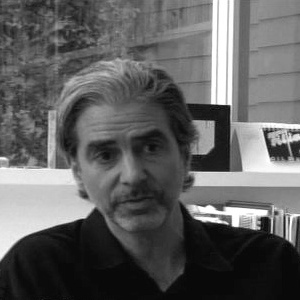 Colin Marshall sits down in Santa Monica with architect and urban designer Doug Suisman, author of Los Angeles Boulevard: Eight X-Rays of the Body Public, soon out in a new 25th anniversary edition. They discuss the difference in cycling to his office on Wilshire Boulevard versus Venice Boulevard; the conceptual importance of “path” and “place” in any urbanism-related discussion he gets into; his arrival in Los Angeles in 1983, after years spent in Paris and New York, and the mixture of disappointment and fascination he first felt on the boulevards here; what it meant that he sensed movement as well as abandonment; how Los Angeles wound up with the its destructive-car-culture rap, and how its freeways have less to do with that than the way its boulevards also became a kind of freeway system; the mistaken notion that the city “doesn’t have transit,” and what specific kinds of transit it actually does still lack; his work with the design of the Metro Rapid buses, and why they’ve struggled so long just to get a dedicated lane; the combined optimism and complacency of Los Angeles in the 1980s, before any rapid transit had appeared; the excitement he first felt at the the city’s private architectural boom, despite its seeming lack of a public realm; how Los Angeles has begun to overcome its “enclave instinct” and find an “urban public language” as Amsterdam did in the 1930s; the importance of the Olympics, MOCA, LACMA’s Anderson Wing, and now the Ace Hotel’s opening in downtown, that “50-year overnight sensation”; what caused Wilshire’s “wig district”; what his childhood trips from his suburban home to downtown Hartford, Connecticut taught him about city life; coffee shops as harbingers of human connectedness; the basic differences between “apartment cultures” and “house cultures,” and how a city moves from one to the other; and the way the boulevards fit into the psychological framework of Los Angeles alongside the mountains and the ocean.
Colin Marshall sits down in Santa Monica with architect and urban designer Doug Suisman, author of Los Angeles Boulevard: Eight X-Rays of the Body Public, soon out in a new 25th anniversary edition. They discuss the difference in cycling to his office on Wilshire Boulevard versus Venice Boulevard; the conceptual importance of “path” and “place” in any urbanism-related discussion he gets into; his arrival in Los Angeles in 1983, after years spent in Paris and New York, and the mixture of disappointment and fascination he first felt on the boulevards here; what it meant that he sensed movement as well as abandonment; how Los Angeles wound up with the its destructive-car-culture rap, and how its freeways have less to do with that than the way its boulevards also became a kind of freeway system; the mistaken notion that the city “doesn’t have transit,” and what specific kinds of transit it actually does still lack; his work with the design of the Metro Rapid buses, and why they’ve struggled so long just to get a dedicated lane; the combined optimism and complacency of Los Angeles in the 1980s, before any rapid transit had appeared; the excitement he first felt at the the city’s private architectural boom, despite its seeming lack of a public realm; how Los Angeles has begun to overcome its “enclave instinct” and find an “urban public language” as Amsterdam did in the 1930s; the importance of the Olympics, MOCA, LACMA’s Anderson Wing, and now the Ace Hotel’s opening in downtown, that “50-year overnight sensation”; what caused Wilshire’s “wig district”; what his childhood trips from his suburban home to downtown Hartford, Connecticut taught him about city life; coffee shops as harbingers of human connectedness; the basic differences between “apartment cultures” and “house cultures,” and how a city moves from one to the other; and the way the boulevards fit into the psychological framework of Los Angeles alongside the mountains and the ocean.
Download the interview here as an MP3 or on iTunes.
Post a Comment